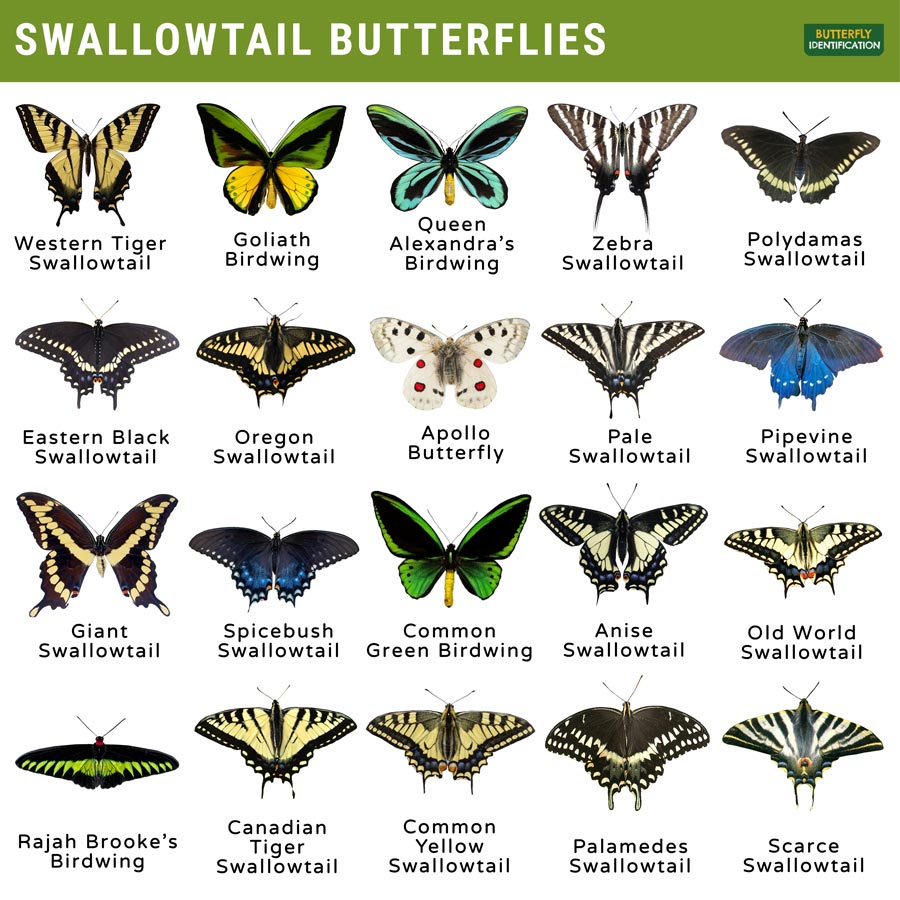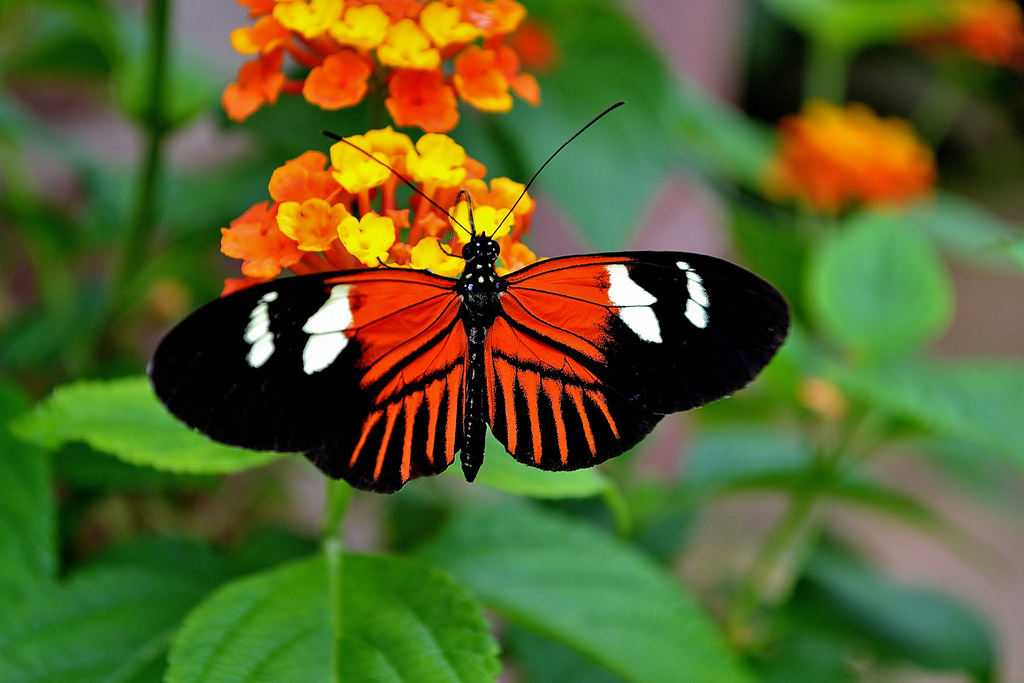Swallowtail (Papilionidae)
The members of the Papilionidae family are also known as swallowtail, having a total of about 550 species. Though most of them inhabit the tropical regions, they are found in every continent apart from Antarctica.

Types of Swallowtail Butterfly
Butterflies In This Family
Description and Identification
Caterpillar
The larva has a smooth and stout appearance, the color mostly being yellow and white with black markings.
Pupa
They are often curved backward, though the colors vary from one species to the other.
Adult Butterfly
Sexual Dimorphism: In many members of the family, the difference between male and female is not visible, though in some sexual dimorphism is prominent.
Color and Appearance: When opened, the wings are mostly black with markings of yellow or even blue. Some even have a yellow body with black markings on the sides. When closed, the yellow and black patterns on the wings are visible, while some species may display patterns of red.
Average Wingspan: 6cm to 14 cm (2.36 inches to 5.5 inches)
Flight pattern: Slow and steady
Eggs
They are round and green in color.
Quick Facts |
| Distribution | Distributed widely through all continents excepting Antarctica |
| Habitat | Around mountainous terrains, humid forests, arid deserts, and lowland meadows |
| Lifespans of adults | 6 to 14 days |
| Host Plants | Passionflower species, wild black cherry, tulip poplar, sweet bay magnolia, common lilac, Hoptree or water ash, chokeberry, willow, cherry, and ash Eastern black swallowtail eats garden plants in the carrot family apart from its host plant Queen Anne’s lace |
| Adult diet | Nectar of host plants, as well as manure and mud |
Did You Know
- The butterflies of this family acquire their name because of the forked appearance on their tail mostly visible when it rests spreading out its wings.
- Swedish botanist Carl Linnaeus chose its family name Papilionidae, the first half of which in Latin stands for butterfly.
- The Siberian Apollo is the northernmost swallowtail spotted around the Arctic Circle region at an altitude of about 1500 meters.



